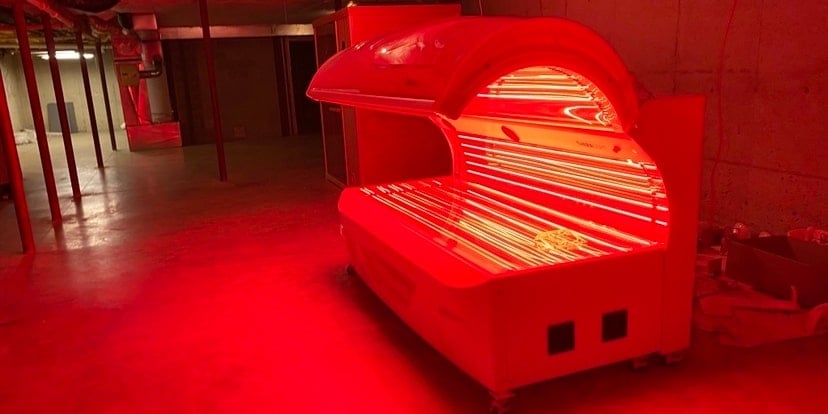Everything to Know About Red Light Therapy
You may have heard of red light therapy as a form of alternative or complementary health care. How does it work, and what is this natural health modality used for? This guide provides an overview to cover the essential basics of red light therapy (RLT).
What Is Red Light Therapy?
Red light therapy (RLT) is a health and wellness technique. It is one type of light therapy that uses specific wavelengths of light to address targeted health concerns and promote certain health benefits. Other names it falls under include photobiomodulation (PBM) and low-level light therapy (LLLT). This specific form of light therapy relies on low-level red wavelengths.
Red light therapy can be applied through targeted treatment directed to small areas of the body or through beds that target the entire body at once.
The mechanisms of RLT encourage cell processes that help improve the functioning of the mitochondria, which is where you find cell energy. More cell energy is created through RLT, which enhances cell functioning, rejuvenation, and repair.
What Is RLT Used For?
Red light therapy’s uses often focus on the skin. It targets skin concerns like:
- Signs of aging, such as wrinkles
- Wounds
- Scars
- Sun damage
- Hair loss
- Psoriasis
- Acne
RLT encourages skin regeneration without creating skin damage. The healing light is penetrated, going below the surface layer of the skin.
People use this therapy for other health purposes as well, including:
- Pain
- Inflammation
- Injuries and sore muscles
- Cold sores
- Symptoms associated with certain conditions, such as rheumatoid arthritis, osteoarthritis, and carpal tunnel syndrome
- Weight and cellulite
- Brain concerns, including physical trauma, neurodegenerative diseases, and mental health disorders
People also use full-body RLT to encourage the highest level of cellular functioning within the body to promote optimal health and well-being.
Benefits of Red Light Therapy
- Healing: RLT helps stimulate the body’s natural healing process. This four-stage process begins with hemostasis which stops bleeding through clotting and begins healing and repair. Inflammation comes next, which is beneficial in the short term by taking away waste and providing components needed for healing and rebuilding. After that, proliferation helps build new tissue. Finally, the body repairs and remodels the area to heal and restore it fully. By boosting cellular energy and improving circulation, red light therapy supports the healing process to help it work better and faster. It works with the body’s natural way of healing.
- Counteracting Damage: It helps to balance oxidative stress due to an imbalance of molecules called free radicals and their counterpart of antioxidants. Oxidative stress results in cell and tissue damage that can turn into various health conditions and diseases, including heart disease or cancer. It also contributes to aging. RLT enters cells and encourages healing from tissue damage that happens due to oxidative stress.
- Safe: Red light therapy seems to be safe when it’s used correctly. It provides a gentle, non-toxic, painless, and non-invasive treatment to address various health and wellness concerns. It does not create exposure to harmful light rays like certain other forms of light, such as ultraviolet (UV).
- Research: Some studies support its benefit for certain issues, including specific skin conditions, wound healing, tissue repair, pain relief, and inflammation relief.
- Complementary: RLT can be combined with other treatments, including additional skin care treatments, self-care treatments, and exercise.
Risks of Red Light Therapy
More research is needed on red light therapy for various purposes. It may not have benefits, or risks may be unknown for specific uses. Long-term safety and benefits are not as well known as short-term ones.
There are some risks to the RLT process, mainly associated with incorrectly using the devices. For example, some people have been burned or experienced blistering, in part due to problems with the equipment or negligence like falling asleep during therapy. It’s possible to damage the eyes or skin if an RLT device or session is not facilitated correctly.
Using red light therapy correctly and according to best practices minimizes risks associated with this therapy. The best option is to work with a trained red light therapy professional who uses high-level, well-maintained equipment.
Expectations
Ideally, red light therapy is customized to the individual and the purpose of the treatment. In general, it takes more than one session to gain benefit. In many cases, RLT treatment involves sessions of 15 minutes each, a few times a week, for weeks or months. Nonetheless, other people may use it less frequently.
A customized treatment plan may combine RLT with other types of treatment, which could reduce the frequency of RLT sessions. Once again, the best results involve a customized plan for the problem and purposes. A red light therapy provider can provide a tailored plan to suit your needs and goals.

